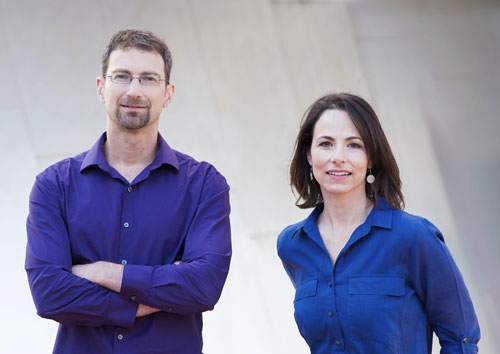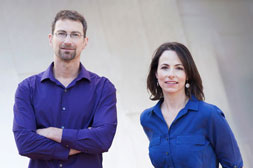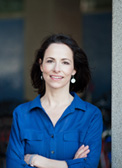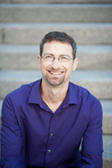




Our individual sites:
Fernanda Viégas
Martin Wattenberg

As leaders of Google's data visualization research group, they focus on finding new ways for users to understand and explore data. Their team's work has appeared on the Google search page, on YouTube, and in mission-critical internal data analytics tools.
Before joining Google, the two founded Flowing Media, Inc., which focused on media and consumer-oriented projects. Prior to Flowing Media, they led IBM's Visual Communication Lab, where they created the ground-breaking public visualization platform Many Eyes, which introduced visualization to millions of users worldwide. The two became a team in 2003 when they performed the first scientific study of Wikipedia, leading to the "history flow" project that revealed the self-healing nature of the online encyclopedia.
Viégas was named one of the most influential women in technology by Fast Company. Her visualizations of email and online conversation led the way for new social media interfaces. Wattenberg, as a director of R&D at Dow Jones, created some of the first digital journalism technology. His visualization of the stock market and baby names are considered Internet classics.
Viégas and Wattenberg are also known for visualization-based artwork, which has been exhibited in venues such as the Museum of Modern Art in New York, London Institute of Contemporary Arts and the Whitney Museum of American Art. Their artwork has influenced contemporary design practice: for instance, the techniques in their wind map are now used by many major media companies to display the weather.
Sample press
Our research agenda encompasses three main themes.
Our medium is data visualization, a technology developed by computer scientists to extract insights from raw numbers. This technique is ideal for investigating a world represented by digital traces, where truth is hidden in masses of information. The resulting studies take the form of web sites, prints, and videos.
At the same time, our artwork complicates and subverts a tool that is largely used by the business and military elite. Unlike these traditional uses, we believe visualization to be an expressive medium that invites emotion. We aim our tools at data sets that range from hip hop songs to Walt Whitman's poetry, from arguments on Wikipedia to expressions of carnal desire. We strive to expand the practical craft of visualization beyond function to create objects of social engagement, pleasure and revelation.
Our process is driven by curiosity and a sense of adventure. Data is the starting point, followed by incessant questioning, with a touch of wonderment and laughter. Eventually we start to ask questions that can't be answered by direct observation. At that point we begin to work in software code, creating a series of digital instruments—telescopes and microscopes of the abstract world—that reveal more than our own eyes can see.
As proponents of expressive visualization, we exploit the power of color and complexity to reveal arresting, unintuitive patterns. Parallel to depth of information, clarity and interactivity are of great concern to us. We strive to build intelligible visualizations that engage viewers at a formal level while allowing them to hold a dialogue with the underlying data. It is in this dialogue, we hope, that the brightest sparks of revelation will be found.
 |
 |
 |